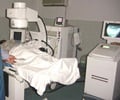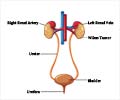Life expectancy of early-stage kidney cancer patients, with risk factors for worsening kidney disease could be extended by personalized treatment plans.
- Personalized treatment plans for patients with small renal tumors may significantly increase life expectancy as opposed to partial nephrectomy
- Early-stage kidney cancer patients with heart diseases and other comorbidities could substantially benefit from this treatment option
- New research recommends the use of computer simulation models to add value to clinical trials
Read More..
Alternatives to Nephrectomy
Most small tumors are either benign or very slow-growing malignancies. Hence they require continuous monitoring, periodically through CT scans to check for variations in tumor size. This option would work for those patients who are not suited for surgery.Dr. Kang explains that this active surveillance option, despite its potential, is being underutilized owing to lack of consensus guidelines and decision-support tools. Talking about considering options other than surgery, Dr. Kang mentioned that “We need a better way of weighing the risks, so that more patients can be considered for non-surgical management.”
Computer-based simulations would be the most effective tools to use in the risk stratification process while assessing various treatment options. Dr. Kang and her colleagues developed a simulation to evaluate the impact of these treatments in patients with small renal tumors. Important variables like the severity of the kidney disease and competing risks of mortality were accounted for in this model.
Findings from Simulations
Partial nephrectomy yielded the longest life expectancy in patients of all ages with normal renal function based on 1 million simulations. Whereas, in patients with chronic kidney disease, increased life expectancy was a result of personalized approaches like active surveillance as opposed to nephrectomy.Personalized treatment decisions have been found to extend life expectancy by more than two years in many simulated subgroups with moderate chronic kidney disease, in contrast to the standard surgical approach.
Another significant finding from the simulations was using MRI to predict papillary renal cell carcinoma. This type of cancer is slow growing and to potentially improve long-term health outcomes in these patients, treatment plans like active surveillance would be effective.
The research team believes that the model would add more value to the clinical decision-making process. Dr. Kang explains that the information from the model would help in comprehending the benefits and risks of active surveillance and help select the right treatments for the right patients.
She said, “There is probably a larger proportion of patients with small renal tumors who merit a fuller discussion of options than is currently recognized. While the model does not prescribe one specific treatment, it does provide a set of estimates so that patients and providers can get more information on the viable options.”
Effectiveness of biopsy, the tool used to differentiate between cancer and benign masses, could also be improved if the tumor subtype information is incorporated into the decision-making process.
Why Computer Simulations?
Randomized clinical trials continue to remain the cornerstone of evidence-based medicine. Despite this, their reach is limited by the time and cost factor involved and also they only represent a limited set of patients. This study has illustrated that computer simulations, on a larger scale, could provide supplemental information to knowledge gained from clinical trials.To conclude, Dr. Kang was quoted saying, “Computer disease models can be useful for studying diseases and potential interventions and guiding prospective studies, helping us understand where the research is needed the most.”
Reference:
- Personalised Treatment for Small Renal Tumors: Decision Analysis of Competing Causes of Mortality - (https://pubs.rsna.org/doi/10.1148/radiol.2018181114)
Source-Medindia
















